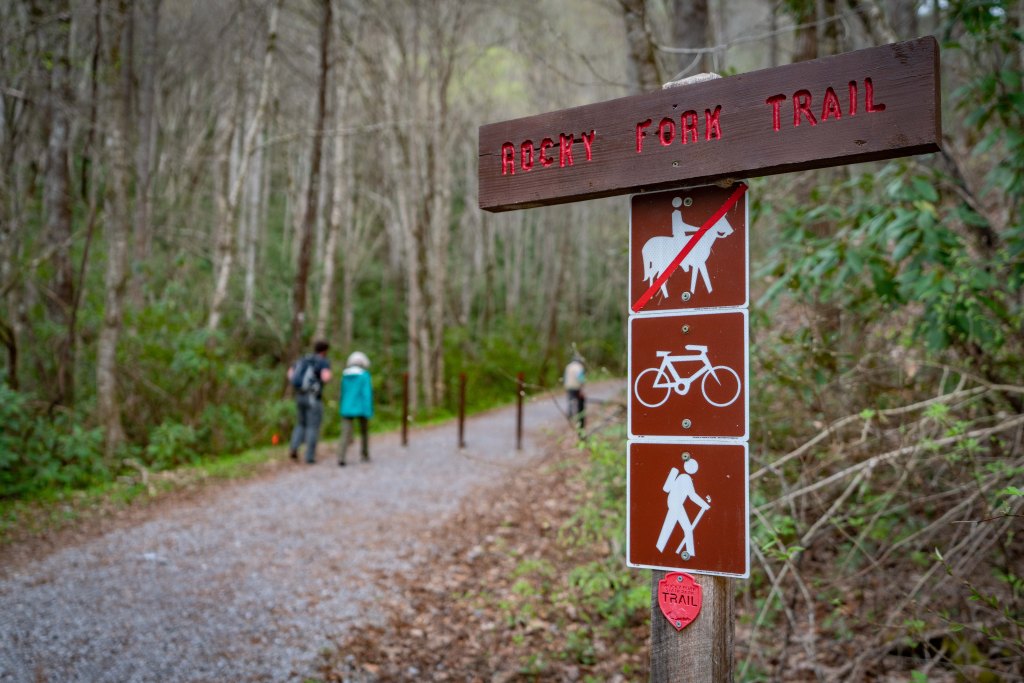Under the new leadership of David Salyers at Tennessee Department of Environment and Conservation and Jim Bryson at the Bureau of Parks and Conservation, the plans for development of Rocky Fork State Park are being re-visited.

At two planning meetings last week—facilitated by Robert Reedy of Reedy and Sykes Architectural Consultants who have designed numerous facilities in Tennessee State Parks—input from many stakeholders was gathered to help guide new plans for the park. TDEC staff stated that the road up Flint Mountain is no longer being considered and announced other changes under consideration, such as moving the location of the visitor center to a site outside the park on the area’s main road.
The meetings were structured as charrettes with small focus groups discussing various topics including preservation of natural and cultural sites, types and locations of facilities, means of access to the park, recreational opportunities and development to support them, land management on park and surrounding forest service lands, and opportunities for economic development as a result of the park. These “roundtable” groups were facilitated by staff from TDEC, US Forest Service, Northeast Tennessee Regional Economic Partnership, and area park managers and rangers.
After the sessions, facilitators reported to attendees the predominant consensus of input for each group. These reports revealed the overall desire to preserve the park’s wild and pristine nature by limiting development and locating facilities outside the park. The input showed a preference for low-impact hiking, nature study, historic site interpretation, and overall protection and preservation of the ecology of Rocky Fork. There was widespread consensus that roads, buildings, and developed campgrounds are not appropriate in the park.

These meetings mark the return of a Planning Office for State Parks, which has been absent in recent years, now brought back under the leadership of Anne Marshall, Senior Advisor to Jim Bryson. Rocky Fork stands to benefit as the first subject of an improved planning process now in the works.
Next, Reedy and Sykes will compile the input gathered last week into a report to present to TDEC in about one month. Then additional input will be sought if needed, and by April or May TDEC hopes to have a draft plan available for release to the public. When that happens there may be public meetings or there may simply be a public comment period, so be alert for your chance to provide your own input. TDEC hopes to have a final plan in place by July.

Bravo. You saved Rocky Fork!!!
Sent from my iPhone
>
LikeLike
Not quite just yet, but it’s looking much better, lets see what the new plan shows.
LikeLike
Hello from Asheville, John, and congratulations on the tremendous progress to protect Rocky Fork’s integrity! I’m so very happy to read that the bulldozers and steamrollers are being kept out and wilderness kept intact for all of us to appreciate!
Renate
Renate
On Mon, Feb 24, 2020 at 3:46 PM Rocky Fork Journal wrote:
> jpbodacious posted: ” Under the new leadership of David Salyers at > Tennessee Department of Environment and Conservation and Jim Bryson at the > Bureau of Parks and Conservation, the plans for development of Rocky Fork > State Park are being re-visited. At two planning meet” >
LikeLike
So relieved to see things going in this direction. Great work to you and your team! And thanks for all of your efforts to maintain the integrity of this natural area.
LikeLike
This is GREAT progress!!
LikeLike
Thanks to you John for doing a great job organizing the opposition to the original development plans and turning it in this good direction.
And btw, I’m leading another Sierra Club backpack to Rocky Fork in early September if you want to participate, hopefully I’ll be ok, see write-up below. Will
11-13 Sept (Fri.-Sun) 3-day Backpack, Rocky Fork State Park (Rocky Fork Creek to Appalachian Trail). A five-year $40 million project by the Conservation Fund and others started in December 2008 and recently resulted in US Forest Service and State of Tennessee ownership of almost 10,000 acres near Erwin, TN, knows as the Rocky Fork tract. The property is being maintained as natural areas with trail construction ongoing. On Friday we will backpack to a camp at the headwaters of Rocky Fork; on Saturday we’ll ascend to the Sampson Mountain Wilderness and Buzzard Rock, with its wonderful views of the entire Rocky Fork watershed, and then on to the Appalachian Trail to Flint Gap, where we’ll camp. Then on Sunday we will descend on the Flint Creek Trail to Rocky Fork and hike back out. We’ll see an area few people have yet explored. The backpack is rated Difficult because of elevation gain. Hiking distance will be about 4.75 miles Friday, 6.5 miles Saturday, and 3.1 miles on Sunday. Driving distance about 100 miles. Preregister with Will Skelton: H 523-2272; Cell 742-7327; whshome@bellsouth.net.
LikeLike